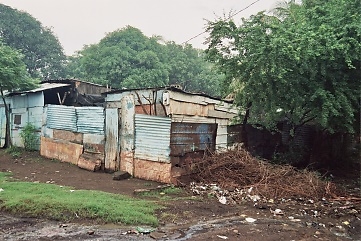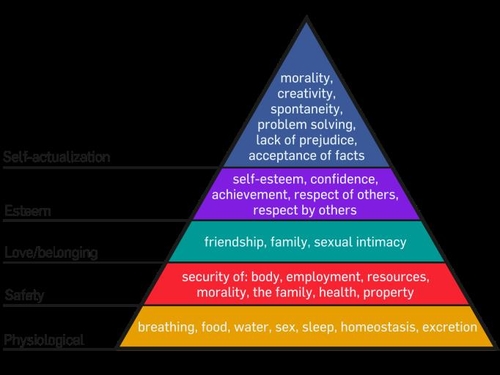Current housing situation. Source: The Sandinista Revolution and the "Fifth Freedom"
According to Maslow’s hierarchy of needs, people firsts need housing. To fulfill other needs (belongingness and love, esteem, self-actualization and self-transcendence) people first have to be provided sufficiently on the physical and safety terms.
In order to get a more specific look on the housing problem, downscaling is needed. Therefore local investigation can be done and direct impact could be analyzed. The choice made by our client is to zoom into the municipality of El Rama.
Building techniques used in El Rama are not adapted to the local environment any more. The current materials create a warm and humid interior climate and are produced with processes that pollute the natural environment (concrete walls with tin roofs).
In addition, the local population is dependent on large-scale central systems for building, electricity, clean drinking water and food. These are systems they cannot always rely on, there is a lack of clean drinking water, there are regular power cuts and a lot of food is imported resulting in high prices. Recent research shows Nicaragua has the poorest quality of housing in all of Latin America and a housing deficit of 12%, 900,000, as mentioned before.
The most important reasons for these problems on the quantitative side are the high building costs, mainly caused by expensive construction materials. On the qualitative side the lack of infrastructure access (e.g. to clean drinking water) and use of poor materials are the main issues[1].
This although El Rama is rich in potential resources, like a yearly rainfall of 3000 mm, 2400 sun hours, various bamboo plantations, trees, fruits and a rich traditional building culture. The image of this traditional housing has been damaged by American influences (starting at 1855). Experience and knowledge of local construction materials were lost over the ages.
Their current design for the social, affordable house is not cheap enough for their main target group, the poorest families in Nicaragua. A couple of years ago, the continuing housing (health and safety) problems were linked to the material bamboo. This thought formed the basis of the project Bambú Social.
[1] Source: IDB, 2012.

